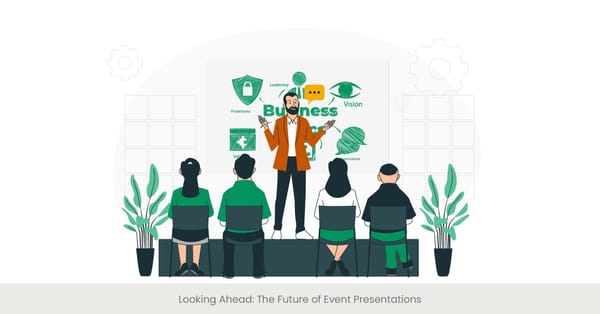
Strategies for Social Media Integration
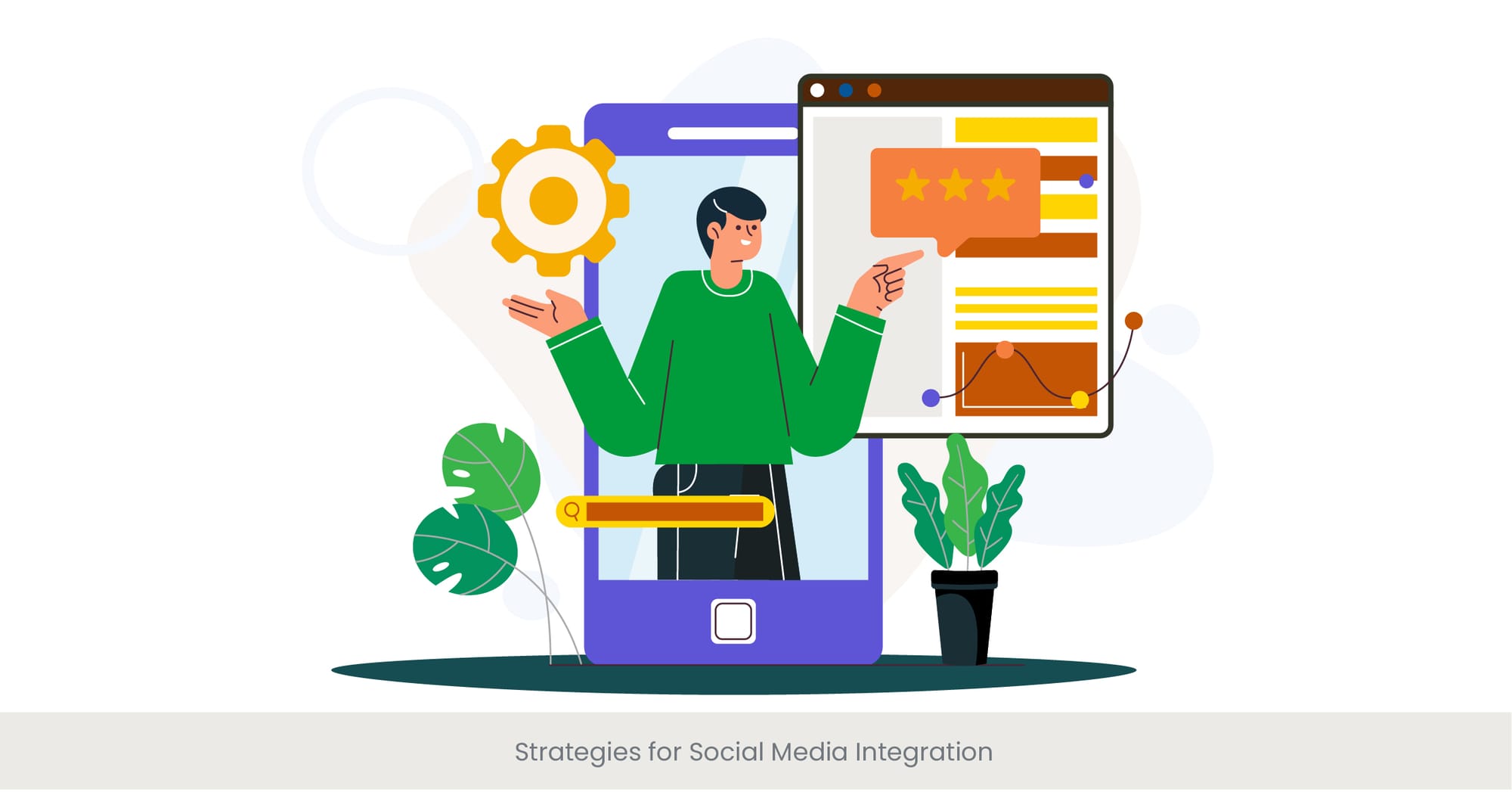
Integrating Social Media: A Gateway to Amplified Presentation Engagement
In the digital age, the integration of social media into presentations has become an indispensable strategy for enhancing audience engagement and extending the reach of content beyond the confines of the website and the event space. This approach allows presenters to leverage various platforms to interact with their audience, collect feedback, and encourage participation in real-time. By embedding social media into presentations, speakers can create a dynamic and interactive experience that resonates with the audience, fostering a sense of community and connectivity.
The Evolution of Presentation Dynamics
Historically, presentations were confined to the physical space in which they were delivered, limiting the audience to those physically present. However, the advent of social media has revolutionized this dynamic, enabling presenters to reach a global audience. Platforms such as Twitter, LinkedIn, and Facebook have become powerful tools for sharing presentation content, engaging with viewers, and amplifying messages. The integration of social media allows for a seamless blend of in-person and virtual elements, catering to the growing trend of hybrid virtual events.
Real-World Applications and Success Stories
Examples of successful social media integration abound, demonstrating its effectiveness in enhancing presentation reach. For instance, incorporating live tweeting during presentations enables speakers to engage with both on-site and remote attendees in real time updates, fostering a participatory atmosphere. Social media walls display aggregated posts from various platforms, enhancing visual engagement and encouraging audience interaction. Furthermore, events leveraging hashtags have seen significant increases in visibility, with attendees actively sharing insights, quotes, and key takeaways, thus amplifying the presentation's impact.
Empirical Evidence and Expert Insights
Research and case studies highlight the tangible benefits of integrating social media into presentations. According to a study by EventMB, events incorporating social media strategies experienced a 33% increase in audience engagement and a notable boost in content reach. Experts emphasize the importance of a well-crafted social media plan, advocating for the use of social media walls and hashtags to create immersive and interactive experiences. By adopting these strategies, presenters can not only enhance the immediate impact of their presentations but also ensure sustained engagement and visibility long after the event concludes.
Creating Shareable Presentation Content

Crafting Content That Resonates and Engages
In the realm of presentations amplified through social media, creating inherently shareable content is pivotal. Shareable content is not just informative but also engaging, evocative, and capable of sparking conversations. It transcends the boundaries of the on screen or presentation room, reaching audiences across digital platforms. This content often includes compelling narratives, striking visuals, and interactive elements that encourage viewers to share with their networks, thus extending the reach and impact of your presentation.
Empirical Evidence and Expert Insights
At the heart of shareable presentation content lies a blend of relevance, emotion, and value. Historically, the most shared content tends to strike an emotional chord and connect with the audience, whether it be through inspiration, humor, or compelling storytelling. Furthermore, incorporating data visualization, infographics, and multimedia elements can significantly enhance the shareability of your presentation. These components not only aid in conveying complex information in an accessible manner but also in capturing the audience's attention and encouraging them to engage with and disseminate the content.
Showcasing Success Through Examples
Real-world examples underscore the effectiveness of creating shareable content. Take, for instance, a presentation on environmental sustainability that utilizes compelling storytelling, infographics depicting alarming trends, and a clear call to action. Such content is not only likely to be shared by the audience but can also spark meaningful discussions on social media platforms, further amplifying its reach. Additionally, presentations that incorporate interactive polls or quizzes encourage participation and sharing, as attendees are often eager to share their perspectives or results with their networks.
Leveraging Insights from Data and Experts
Evidence supporting the importance of shareable content is abundant. A study published in the Journal of Marketing found that content with emotional appeal is 30% more likely to be shared than purely informational content. Experts in digital marketing emphasize the role of visuals in enhancing shareability, noting that presentations including images and videos see a 50% increase in shares on average. By integrating these insights into your presentation strategy, you can significantly increase the likelihood of your content being disseminated across social platforms, thereby expanding your presentation's reach and impact.
Live Tweeting and Real-Time Audience Engagement
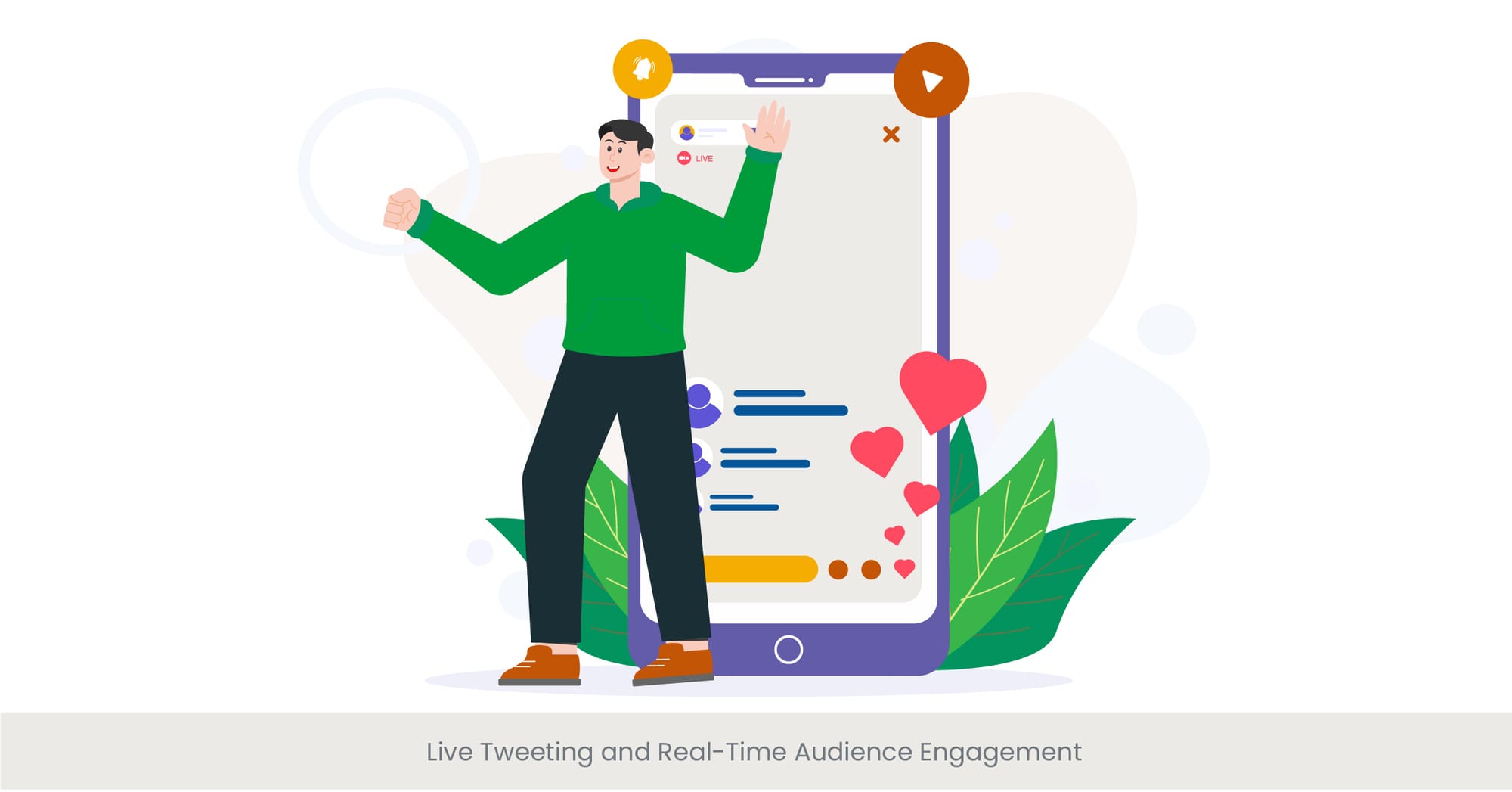
Elevating Presentations with the Power of Live Tweeting
Live tweeting during presentations represents a dynamic method to extend the conversation beyond the physical room into the virtual sphere, enabling real-time engagement with both present and remote audiences. This practice involves the strategic use of tweets to highlight key points, share insights, and encourage participation through questions or polls. By integrating live tweeting, presenters can foster a participatory environment, where online audiences can contribute, react, and engage as if they were in the room, thus amplifying the presentation's reach and impact.
The Backbone of Real-Time Engagement
Historically, audience engagement was limited to those physically present, often leaving out a wider audience that could benefit from the content. The advent of social media, particularly Twitter, has revolutionized this aspect by facilitating real-time interaction. Live tweeting acts as a bridge between the speaker and the online audience, enabling instant feedback and discussions. It enriches the presentation experience by allowing the audience to become active participants, contributing their thoughts and spreading key messages to broader networks.
Transforming Engagement Through Live Tweeting: Case Studies
Numerous success stories highlight the transformative power of live tweeting. For example, conferences and seminars that employ live tweeting have reported increased audience engagement levels, with hashtags specific to the event trending locally or even globally. This not only boosts the visibility of the presentation but also engages a wider community in the discussion. A notable case is a tech conference where live tweets from attendees about groundbreaking products unveiled during the presentation led to widespread media coverage and heightened interest in the conference content.
Supporting Data and Expert Opinions
Research indicates that presentations employing live tweeting can experience up to a 70% increase in audience engagement. Experts in digital communication and social media strategy underscore the importance of preparation, such as predefining hashtags and encouraging the audience to use them. This strategy ensures a cohesive and widespread dissemination of content. Moreover, studies suggest that events featuring live tweeting see a significant spike in online mentions and engagements, thereby extending the presentation’s digital footprint and enhancing its overall impact.
Using Social Media Walls for Interactive Displays
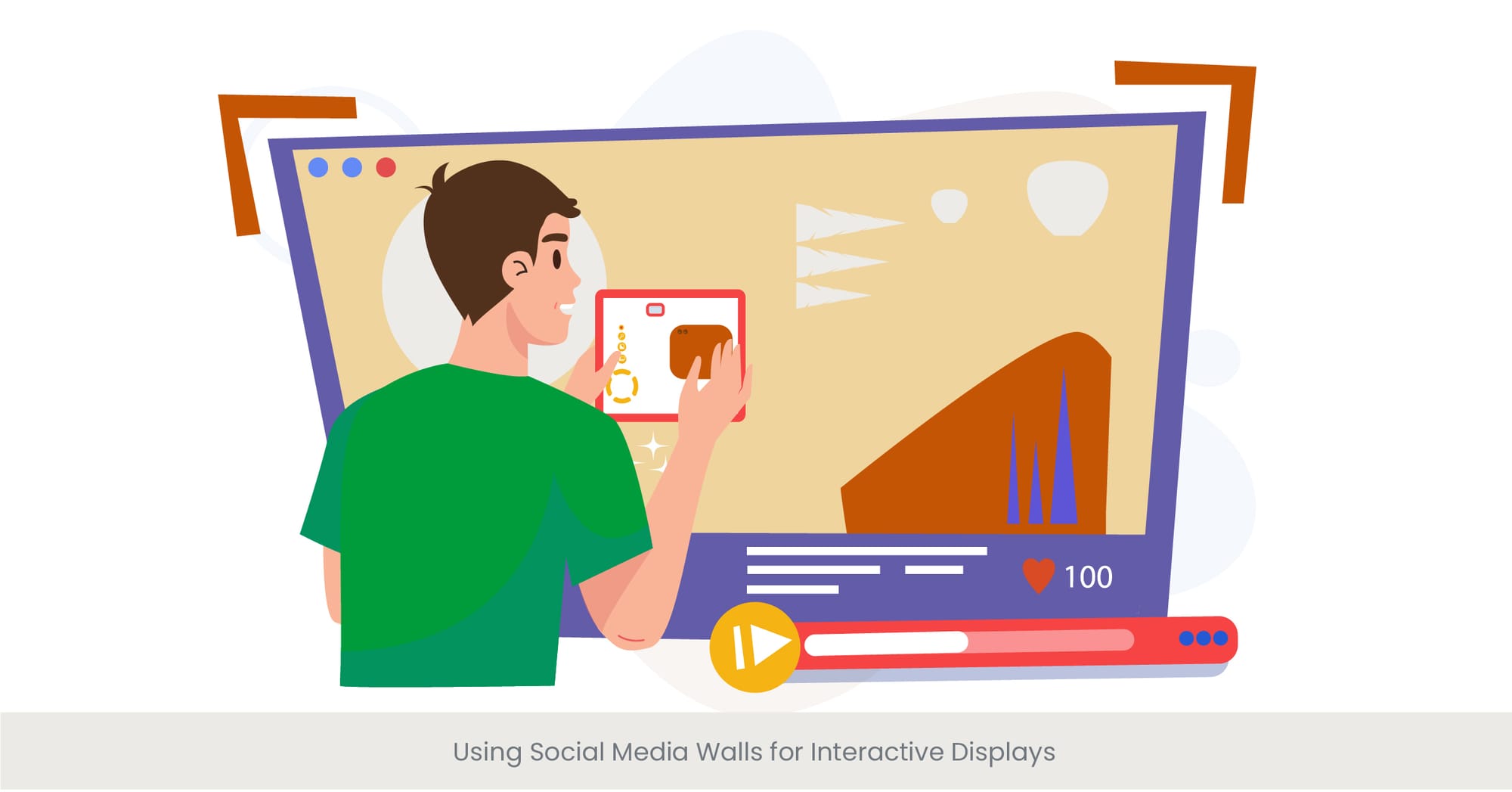
Transforming Audience Engagement with Social Media Walls
Social media walls have emerged as a revolutionary tool in amplifying the reach and engagement of presentations, transforming passive audiences into active participants. These dynamic displays embed and aggregate real-time social media posts related to the presentation or event, creating a visually engaging and interactive experience. By embed and showcasing tweets, photos, videos, and comments from various platforms, social media walls foster a sense of community, encourage audience interaction, and provide valuable feedback for presenters.
The Evolution of Audience Interaction
The concept of audience interaction has evolved significantly with the advent of digital technologies. Historically, engagement during presentations was limited to Q&A sessions or feedback forms post-event. However, social media walls introduce a new dimension of real-time engagement, allowing for instant display and discussion of audience contributions. This technology reflects the shift towards more inclusive and interactive presentations, where the audience plays an active role in content creation and dissemination.
Case Studies: Bringing Presentations to Life with Social Media Walls
Real-world applications of social media walls demonstrate their potential to enhance presentation and drive engagement. For instance, at a major marketing conference, a social media wall displayed live reactions, questions, and shared insights from attendees, creating a vibrant and interactive backdrop to the keynote speeches. This not only encouraged further participation from the audience but also extended the conference’s reach as posts were shared beyond the event, attracting attention from those unable to attend.
Insights and Best Practices from Industry Experts
Evidence supporting the effectiveness of social media walls in boosting engagement is compelling. Studies show that events utilizing social media walls see a significant increase in audience participation, with a notable uptick in social media activity related to the event. Experts recommend leveraging customized hashtags to streamline content aggregation and ensure that the most relevant and engaging posts are displayed. Furthermore, they advise on the importance of moderation to maintain the quality and relevance of displayed content, ensuring a positive and enriching experience on social and event walls for all participants.
Enhancing Event Visibility with Hashtags
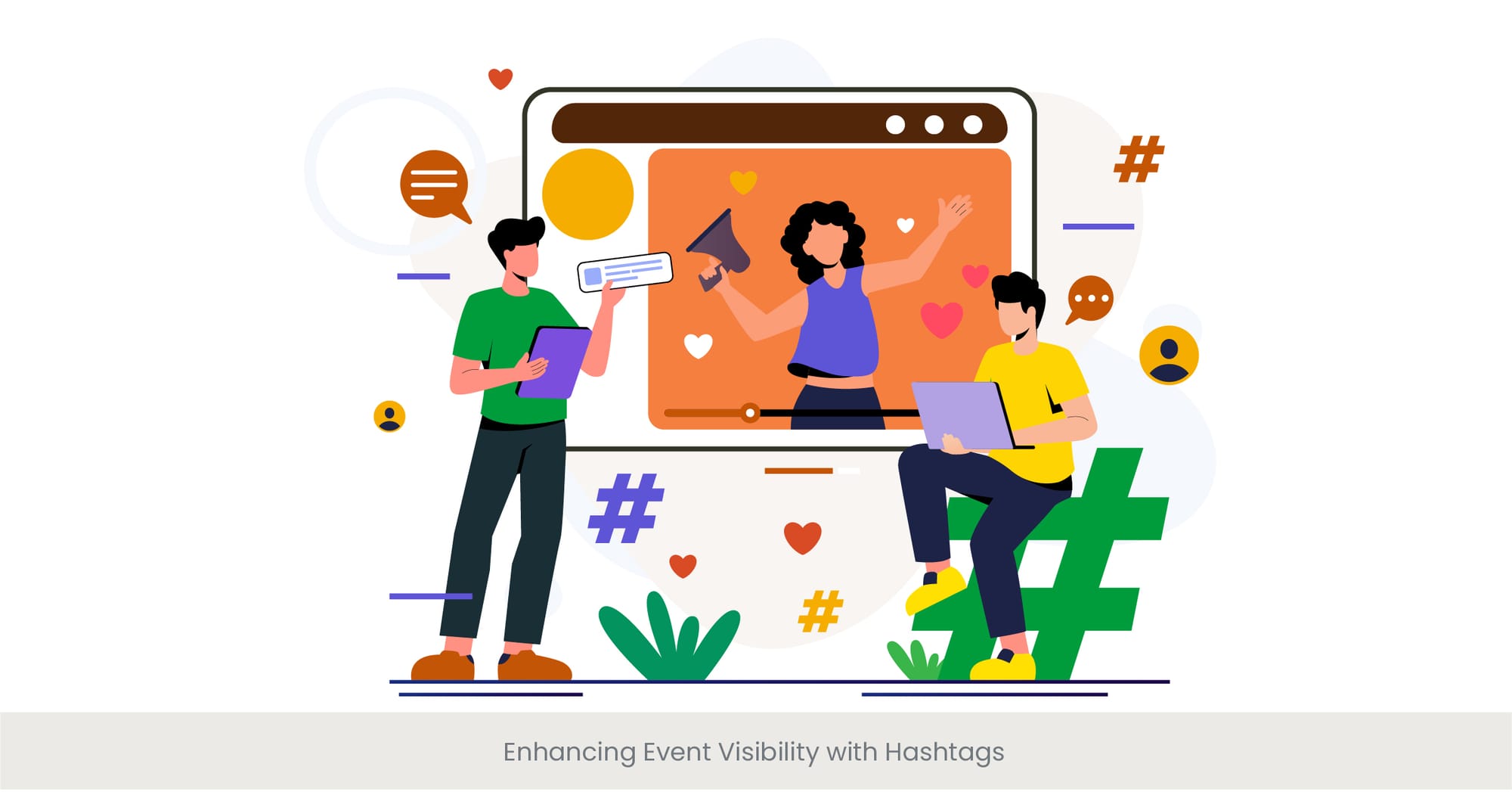
Harnessing Hashtags to Broaden Your Presentation's Horizon
In the digital landscape, hashtags serve as beacons that guide discussions and amplify messages across social media platforms. When integrated into presentations and associated promotional activities, hashtags not only enhance event visibility but also create cohesive narratives that audiences can follow and contribute to. This strategic use of hashtags enables presenters and organizers to track engagement, foster community around the event, and extend the reach of their content to potentially global audiences.
The Mechanics of Hashtag Efficacy
The effectiveness of hashtags in elevating event visibility lies in their ability to categorize content, making it easily discoverable. Historically, the concept of hashtags was popularized as a means to aggregate discussions and content on social media platforms. By employing a unique and memorable hashtag for an event or presentation, organizers can create a virtual gathering place for attendees, remote viewers, and interested parties to share insights, experiences, and feedback, thus amplifying the event's digital footprint.
Spotlight on Success: Case Studies of Impactful Hashtags
Numerous events have leveraged hashtags to great effect, significantly increasing their visibility and engagement. For example, a tech conference using a specific hashtag managed to trend on social media, attracting attention from industry influencers and media outlets, thereby amplifying its reach beyond the physical attendees. Another case saw a charity event’s hashtag facilitate a global conversation, resulting in increased awareness and donations. These examples underscore the power of well-chosen hashtags to transcend geographical boundaries and create widespread impact.
Guidance from the Experts: Best Practices for Hashtag Usage
Research and expert opinion underscore the importance of selecting unique, relevant, and easy-to-remember hashtags for event promotion and engagement. The key to maximizing a hashtag’s impact is consistency across all promotional materials and encouraging its use by speakers, the event attendees themselves, and online followers. Additionally, monitoring hashtag performance through social media analytics tools can provide valuable insights into engagement levels, audience reach, and content resonance, enabling organizers to fine-tune their strategies in real-time or for future events.
Encouraging User-Generated Content
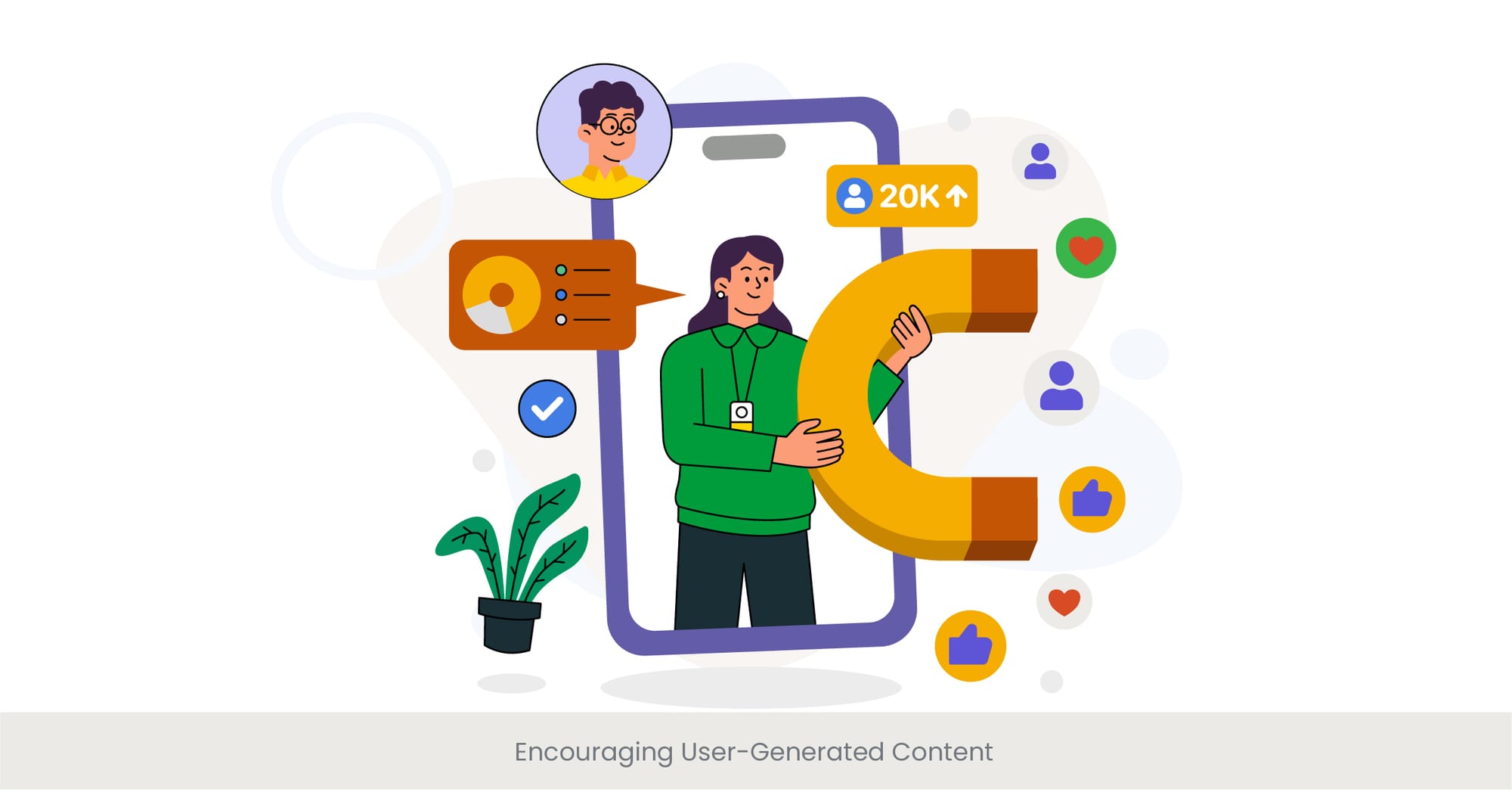
Leveraging the Community for Authentic Engagement
Encouraging user-generated content (UGC) is a powerful strategy to amplify your presentation’s reach and engagement, fostering a sense of community and authenticity around your event. UGC, which includes tweets, photos, videos, and comments created by your audience, not only enriches the content landscape of your event but also provides social proof, showcasing real, relatable experiences from attendees. This grassroots level of engagement invites a broader participation, making your event more relatable and appealing to a wider audience.
The Foundations of UGC: Building Blocks for Greater Reach
At its core, UGC is about tapping into the creative potential of your audience, transforming them from passive recipients to active content creators. Historically, events relied on organizers for content, but the rise of social media has shifted this dynamic, allowing anyone with a smartphone to contribute their perspective. This shift not only diversifies the content related to your event but also significantly broadens its reach, as each piece of UGC has the potential to be shared across different networks, exponentially increasing visibility.
Real-Life Triumphs of UGC Integration
Events that have successfully harnessed the power of UGC provide insightful case studies into its impact. For instance, a music festival encouraged attendees to share their experiences using a dedicated hashtag, resulting in thousands of posts that not only promoted the event but also provided a rich, multi-perspective narrative of the festival. Similarly, a conference utilized a social media wall to display UGC in real-time, creating an engaging and dynamic environment that encouraged even more participation and content creation.
Expert Insights and Strategies for Maximizing UGC
To effectively encourage and utilize UGC, experts recommend communicating how attendees can contribute, often through dedicated hashtags or social media prompts. It’s also crucial to highlight and reward the best contributions, whether through social recognition or tangible incentives, to motivate further participation. Additionally, employing tools like social media aggregators can help organizers curate and display UGC, enhancing the event experience. Analytics play a vital role in understanding the reach and impact of UGC, providing valuable insights for refining strategies in real time and for future planning.
Pre- and Post-Event Social Media Campaigns
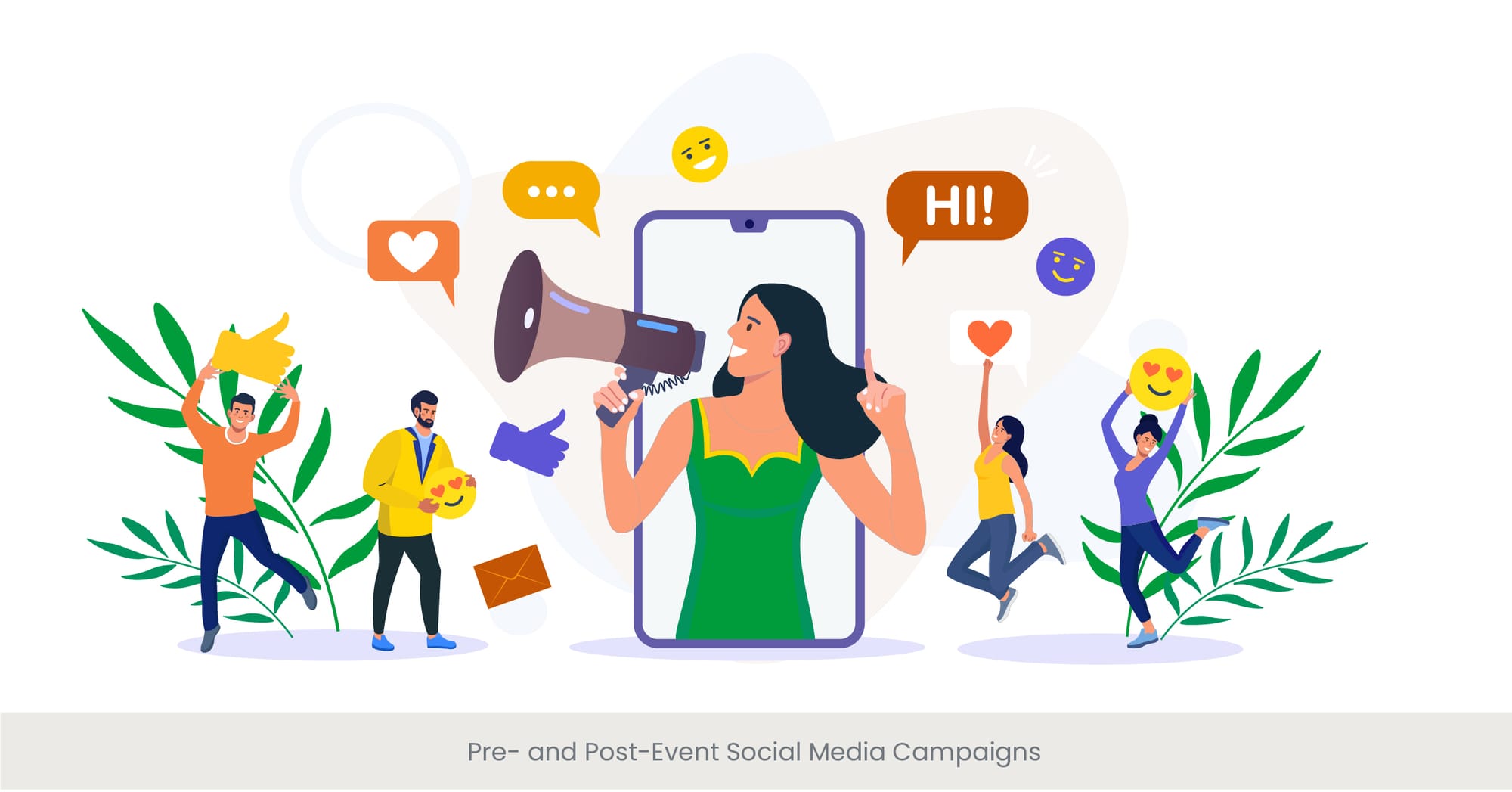
Strategizing Social Media to Frame Your Event Narrative
The successful integration of pre- and post-event social media campaigns can significantly amplify your presentation's impact, creating anticipation before the event and sustaining engagement afterward. These campaigns are essential in framing the narrative of your event, allowing you to control the conversation, highlight key moments, and share valuable insights. Through strategic planning, these campaigns can attract a wider audience, encourage participation, and extend the life cycle of your event's content.
Building Momentum Before the Event
Pre-event campaigns are all about building anticipation and excitement. Historically, the buildup to events relied heavily on traditional marketing methods, but the digital age has shifted the focus to social media platforms. By sharing sneak peeks, speaker highlights, and interactive content, organizers can engage potential attendees and create a buzz around the event. This phase is crucial for laying the groundwork for user-generated content, as early engagement can lead to more active participation during the event itself.
Sustaining Engagement After the Curtain Falls
Post-event campaigns focus on sustaining the momentum generated by the event. This involves sharing key takeaways, speaker presentations, and thanking participants and speakers. Moreover, showcasing user-generated social content made from the event can encourage continued conversation and sharing, keeping the event's memory alive in the digital realm. These campaigns can also serve as a bridge to future events, maintaining interest and engagement within the community.
Case Studies and Best Practices
Successful pre- and post-event social media campaigns offer valuable lessons. For instance, a conference utilized a series of teaser videos featuring keynote speakers, which were widely shared and significantly increased early registrations. Post-event, the same conference shared session recordings and exclusive interviews with speakers, prolonging engagement and setting the stage for the next event. Experts recommend a consistent and coherent message across all platforms, engaging directly with users to foster a sense of belonging and anticipation, and using analytics to refine strategies for future campaigns.
Analytics and Measuring Social Media Impact
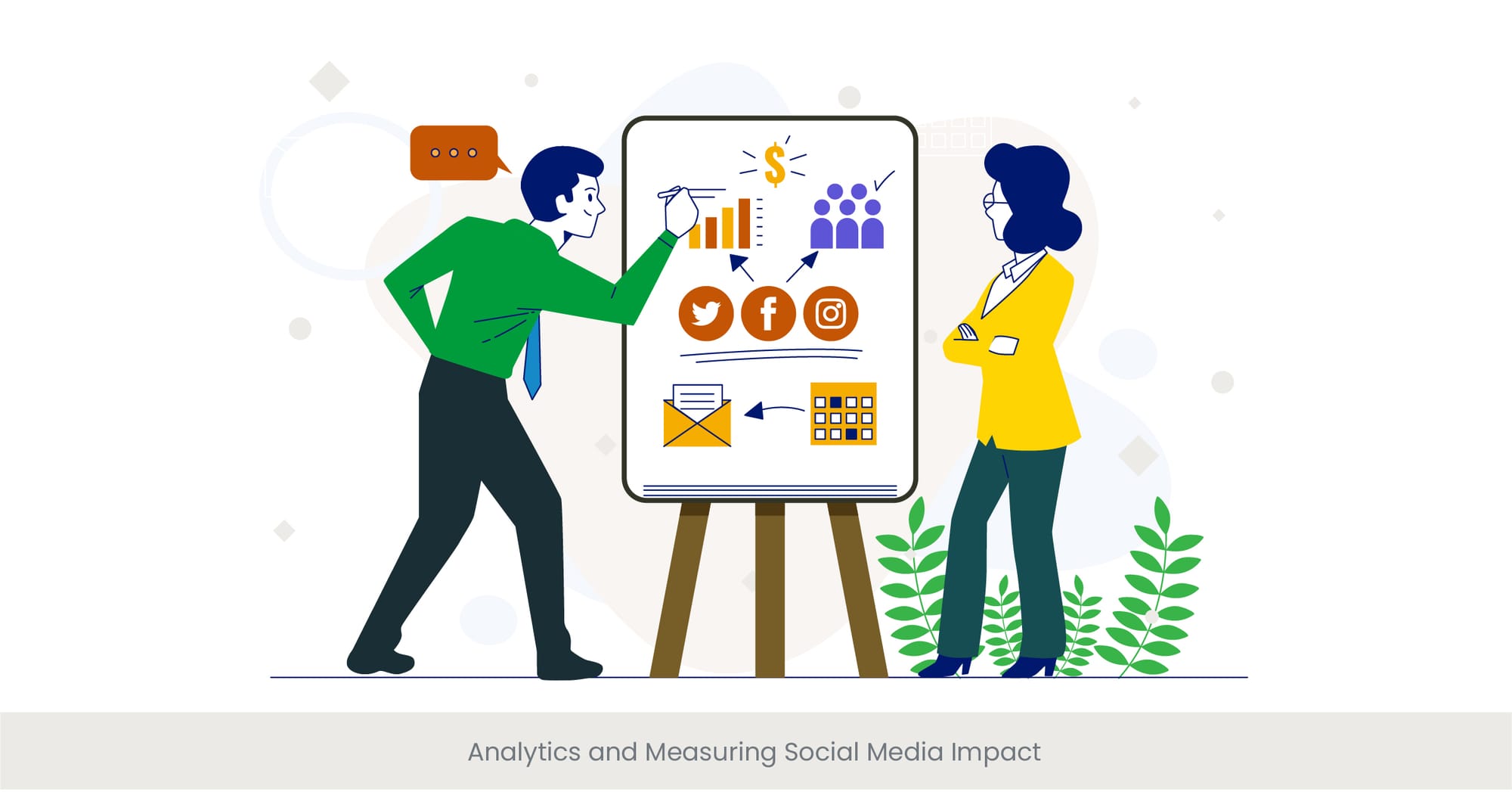
Deciphering the Digital Footprint of Your Event
In the landscape of digitally enhanced presentations, understanding the impact of your social media efforts is paramount. Analytics provide a comprehensive view of how your event resonates with the audience, offering insights into engagement levels, reach, and the overall effectiveness of your social media strategies. By measuring the digital footprint of your event, you can identify what resonates with your audience, allowing for data-driven decisions to enhance future presentations and campaigns.
The Foundation of Analytics in Event Strategy
The role of analytics has evolved significantly, transitioning from simple metrics like attendance numbers to sophisticated analyses of engagement, sentiment, and social sharing. Historically, the success of events was gauged by immediate feedback or post-event surveys. Today, social media analytics offer real-time insights into how content is being received, shared, and discussed, providing a dynamic understanding of audience engagement.
Case Studies: Insights into Analytics Success
Real-world examples highlight the transformative power of analytics. For instance, an event organizer utilized social media analytics to track the performance of different types of social posts made, discovering that behind-the-scenes content garnered the most engagement. This insight led to a strategic shift in content creation, significantly increasing overall engagement for future events. Another example involves the use of hashtag analytics to measure the reach and impact of a social media campaign, enabling organizers to refine their messaging and targeting for increased visibility.
Expert Recommendations on Analytics Utilization
To effectively leverage analytics, experts suggest setting clear, measurable goals for social media campaigns, such as engagement rates, hashtag usage, and audience growth. Utilizing specialized tools and platforms can simplify the collection and analysis of data, providing actionable insights. Additionally, it's important to regularly review analytics to understand trends over time, allowing for continuous improvement in social media strategy. Engaging with the data not only highlights successes but also reveals opportunities for enhancing audience interaction and event impact.
Case Studies: Successful Social Media Amplification
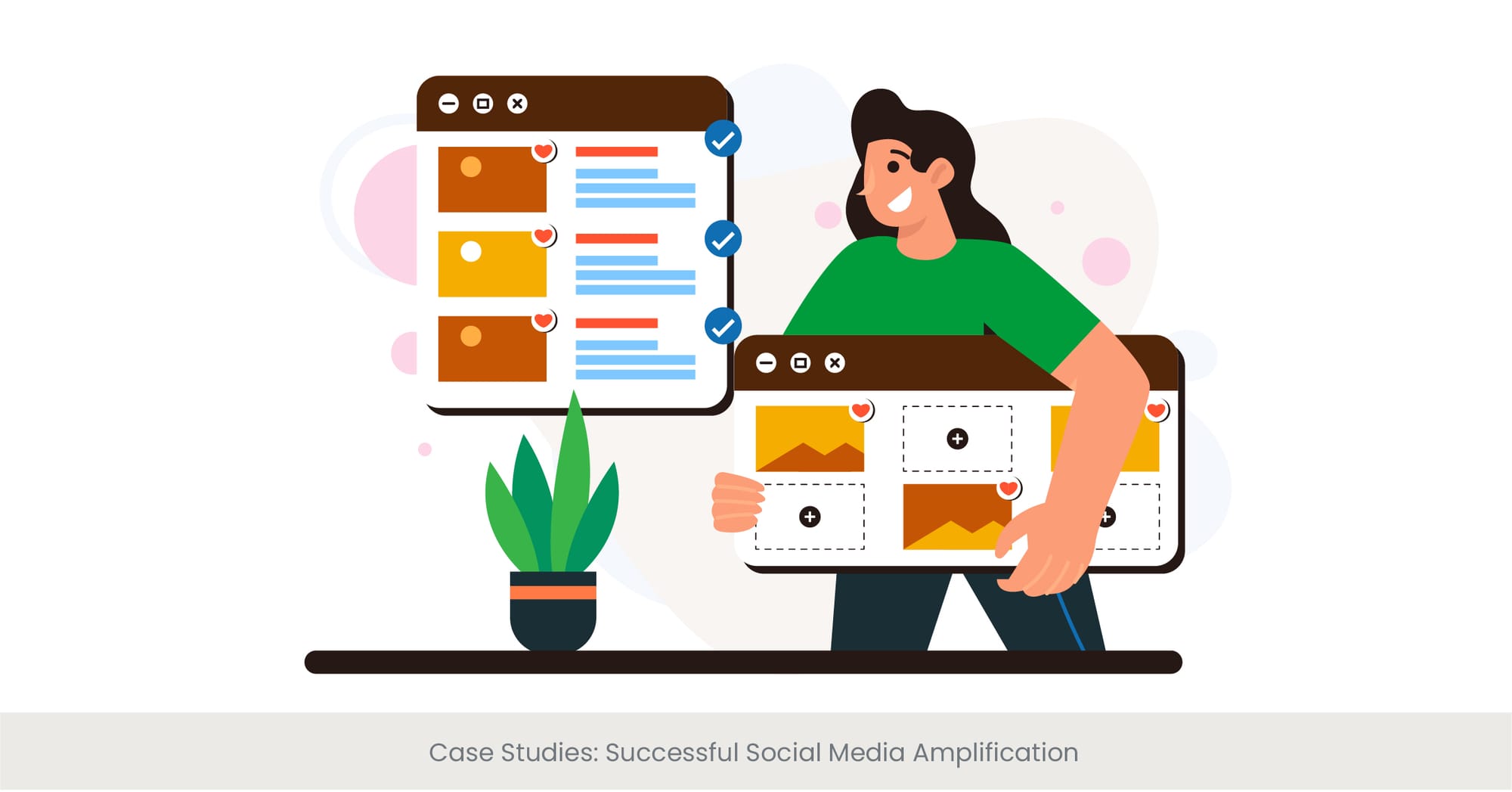
Showcasing Excellence in Digital Engagement
The digital landscape is replete with examples of presentations and events that have successfully harnessed the power of social media to amplify their reach and impact. These case studies not only serve as inspiration but also offer practical insights into the strategies and tactics that can elevate a presentation from good to unforgettable. By examining these success stories, we can extract valuable lessons on effectively integrating social media to engage and expand our audience.
The Power of Hashtags: A Launchpad for Global Conversations
One notable case study involves a global environmental conference that employed a unique hashtag campaign to unify conversations across various social media platforms. This strategic move not only facilitated easy tracking of discussions related to the conference but also encouraged widespread participation from those unable to attend in person. The hashtag quickly gained traction, trending globally and resulting in significant increases in awareness and engagement with the conference’s themes and content.
Leveraging User-Generated Content for Authentic Engagement
Another inspiring example comes from a large-scale music festival that focused on encouraging and showcasing user-generated social media content. By actively promoting a dedicated hashtag and setting up interactive social media walls, the festival created a vibrant community of attendees sharing their experiences in real time. This approach not only enhanced the event experience for attendees but also generated a wealth of authentic content that promoted the festival far beyond its physical location.
Integrating Live Tweeting for Real-Time Interaction
A professional development seminar demonstrated the effectiveness of live tweeting as a tool for real-time audience engagement. By encouraging participants to tweet questions and insights using a specific hashtag, the seminar fostered a dynamic and interactive discussion that extended beyond the confines of the venue. This strategy not only enriched the learning experience for attendees but also attracted attention and participation from a wider online audience, greatly expanding the seminar’s reach and impact.
Insights from Experts: Amplifying Your Event's Digital Presence
These case studies underline the importance of a strategic approach to social media integration. Experts emphasize the value of early planning, consistent messaging, and active engagement with the audience before, during, and after the event. Analyzing the success of these examples, it’s clear that a well-executed social media strategy can significantly enhance visibility ticket sales, engagement, and the overall success of an event.
Best Practices for Social Media Engagement
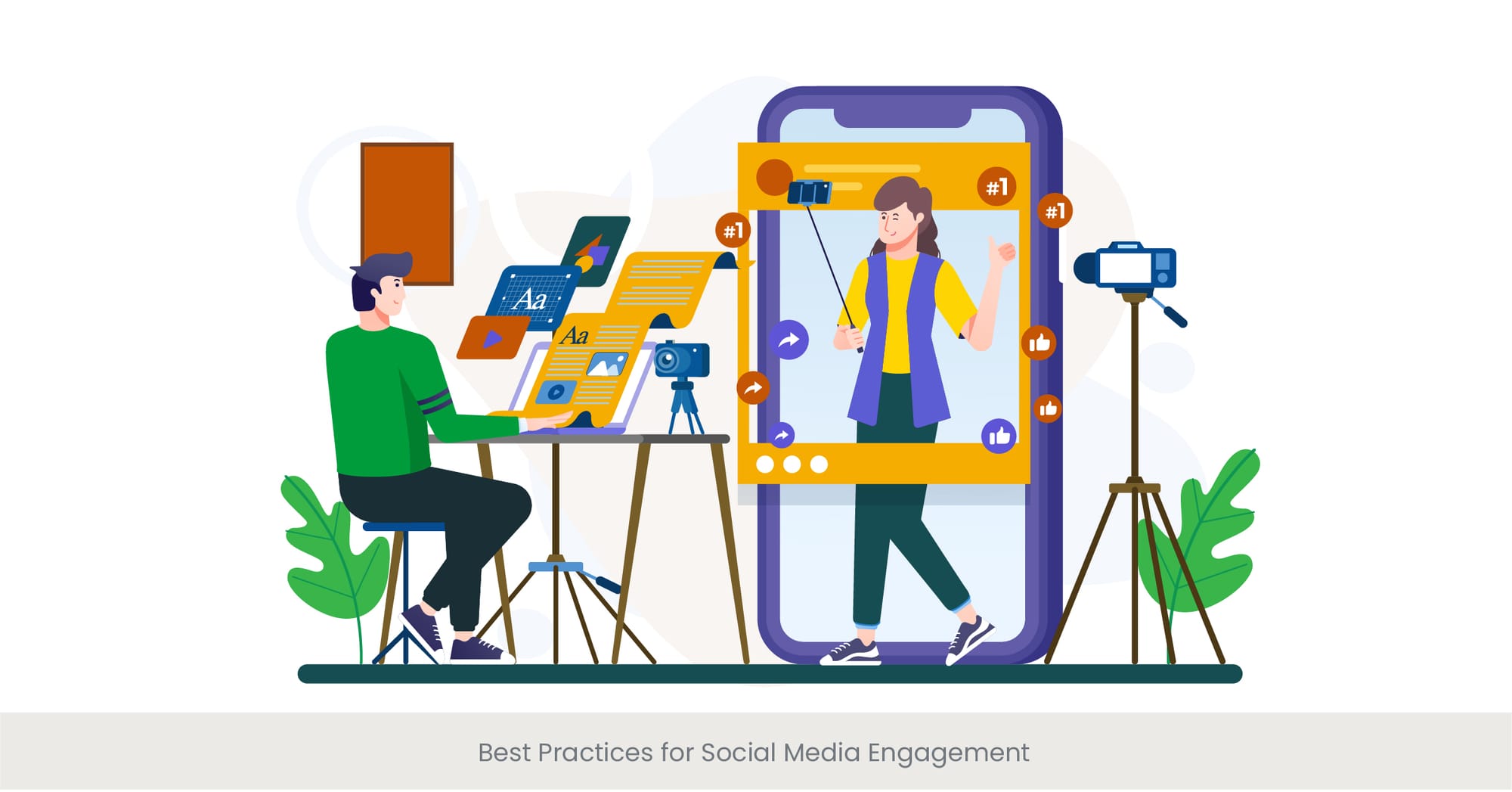
Cultivating a Vibrant Online Community Around Your Event
Creating a lasting impact with your presentation or event in today's digital-first world necessitates a robust strategy for social media engagement. Best practices in this realm are not just about promoting content; they involve building and nurturing a vibrant online community that supports and amplifies your message. This section outlines essential strategies that ensure your social media efforts resonate with your audience and foster an environment of active participation and sharing.
Establish a Consistent and Authentic Voice
Authenticity forms the cornerstone of effective social media engagement. Your social media presence should reflect the tone, values, and personality of your brand or event. Consistency in your messaging across different platforms helps in building trust and recognition among your audience. Historically, the most successful social media campaigns are those that maintain a genuine and consistent voice, making their content relatable and share-worthy.
Leverage Visuals and Multimedia Content
The power of visuals in engaging audiences cannot be overstated. Photos, videos, infographics, and live streams capture attention much more effectively than text alone. By incorporating diverse multimedia elements into your social media strategy, you can enhance interaction, encourage shares, and increase the visibility of your event. Engaging visuals not only tell your brand's story much more effectively but also invite audiences to be part of the conversation.
Encourage Interaction through Questions, Polls, and Contests
Interactive content such as questions, polls, and contests can significantly boost audience engagement. These tactics not only stimulate interaction but also provide valuable insights into your audience's preferences and opinions. For instance, live Q&A sessions or polls on social media platforms can drive real-time engagement, making your audience feel heard and valued. Similarly, contests with incentives can motivate participants to create and share content related to your event on social feed, further amplifying its reach.
Monitor, Respond, and Adapt
Active monitoring of your social media channels is crucial for understanding audience sentiment and responding to feedback in real-time. Engaging with comments, answering questions, and addressing concerns promptly can enhance your event's reputation and foster a loyal community. Additionally, adaptability is key; being open to tweaking your strategy based on analytics and feedback ensures your social media efforts remain effective and aligned with your audience’s evolving interests.
FAQs
What is a social wall at events?
A social wall at events is a dynamic video display that aggregates and shows real-time social media posts related to the event from various platforms. It encourages audience participation by showcasing tweets, photos, videos, and comments, creating an interactive and engaging experience.
How to do a social media wall?
To create a social media wall for events only, you can use a social media aggregator tool to collect the best content, from various platforms using specific hashtags or criteria. This content is then displayed on a digital screen or wall at your event, often with customization and moderation options to ensure relevance and appropriateness.
What is a media wall in an event?
A media wall in an event is similar to a social wall, focusing on displaying curated social media posts, photos, and videos related to the event. It serves as a focal point for engagement, encouraging attendees to share their experiences and interact with all the content there.
What is a wall in social media?
In the context of social media, a wall refers to a digital space on platforms or events where users can post or share content. It aggregates these contributions, facilitating community interaction and content sharing on social walls.
What are aggregators in social media?
Aggregators in social media are tools or platforms that collect and curate content from various social media sources. They are used to streamline the gathering of relevant posts, images, and videos, often for display on social media walls or for analysis.
What is media aggregator?
A media aggregator is a tool that collects and organizes content from different media sources, including social media websites, news sites, and blogs. It's used to create a centralized feed of content based on specific topics or interests.
What is the app that aggregates social media?
Apps that integrate and aggregate social media feeds, like Hootsuite, allow users to manage and monitor multiple social media accounts from a single dashboard. These apps enable content scheduling, posting, and analytics across platforms.
Is Hootsuite an aggregator?
Yes, Hootsuite is a social media management platform that functions as an aggregator website. It allows users to control various social media feeds and profiles, schedule posts, monitor mentions, and analyze traffic and engagement data.
What is an event wall?
An event wall is a digital or physical display used at events to show curated content such as social media posts, photos, and videos related to the event. It aims to increase engagement and interaction through social wall among attendees.
How do you engage attendees in an event?
Engaging attendees in an event can be achieved through interactive content, social media walls, live tweeting, Q&A sessions, contests, and personalized experiences. Encouraging the creation and sharing of user-generated content also fosters a participatory atmosphere.
What is a hashtag wall?
A hashtag wall is a specific type of social media wall that aggregates and displays posts using a specific hashtag. It encourages event participants to share their experiences and thoughts using the hashtag, increasing engagement and visibility.
What is a social wall?
A social wall is an interactive video display that collects and shows real-time social media posts from various platforms related to a specific topic, event, or hashtag, enhancing engagement and participation in social feed among viewers.

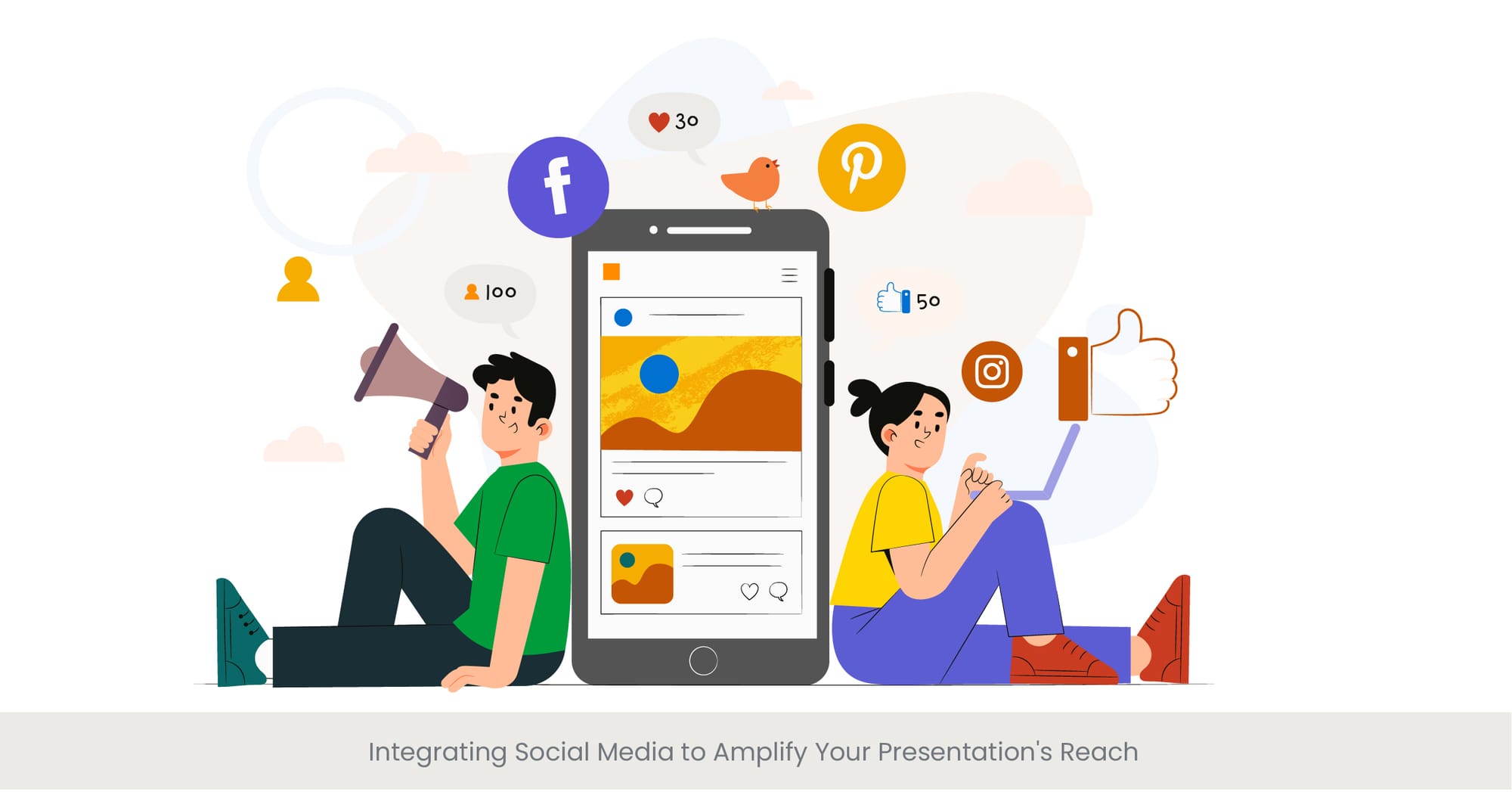

%20(1).jpg)
%20(1).jpg)
